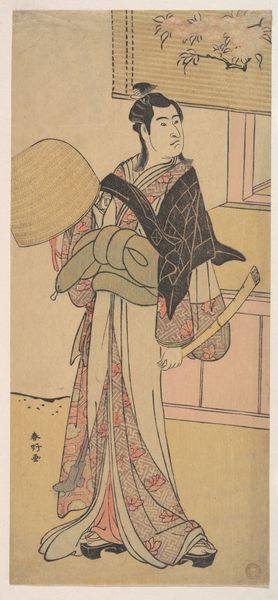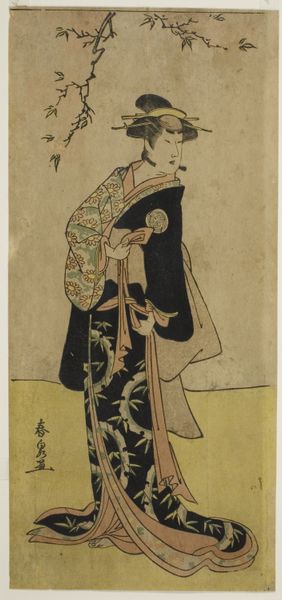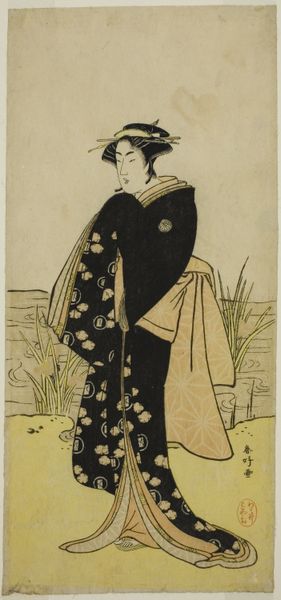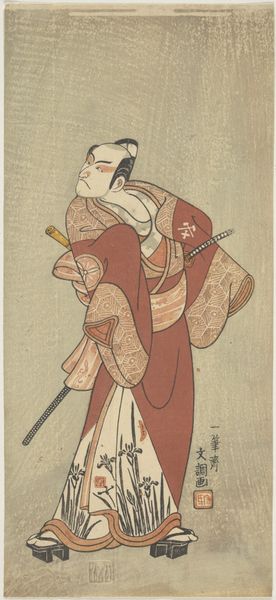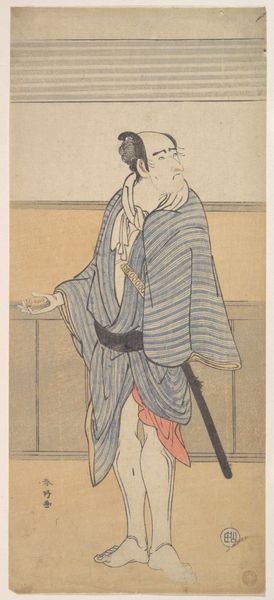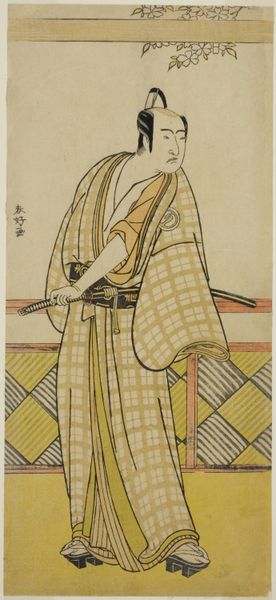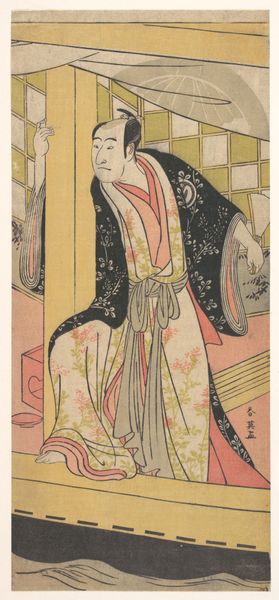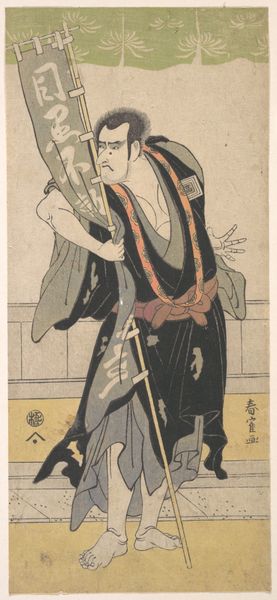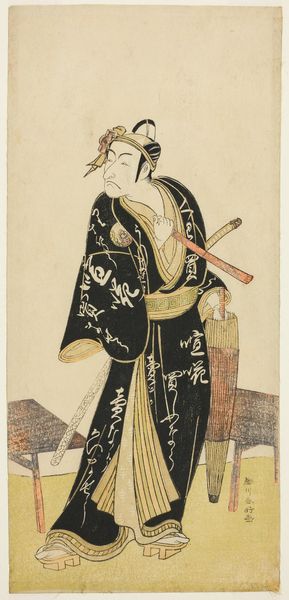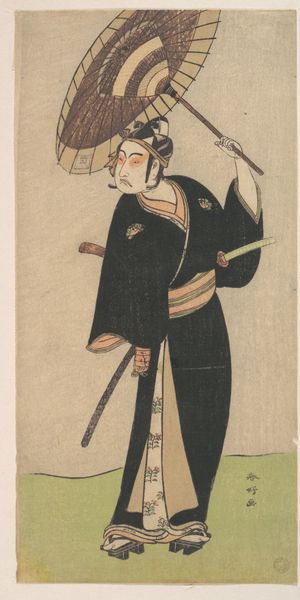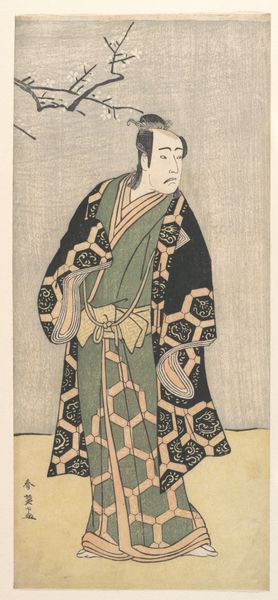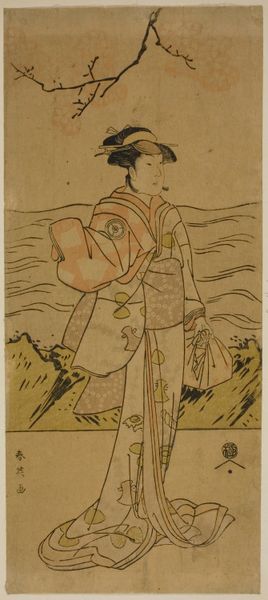
The Actor Iwai Hanshiro IV as Tonase (?) in the Play Kanadehon Chushingura (?), Performed at the Kiri Theater (?) in the Eighth Month, 1787 (?) c. 1787
0:00
0:00
print, woodblock-print
#
portrait
# print
#
asian-art
#
caricature
#
ukiyo-e
#
figuration
#
woodblock-print
#
genre-painting
Dimensions: 32.7 × 14 cm (12 7/8 × 5 1/2 in.)
Copyright: Public Domain
Editor: So, here we have Katsukawa Shun'ei's "The Actor Iwai Hanshiro IV as Tonase," a woodblock print from around 1787. What strikes me immediately is the strong vertical composition and the detailed patterns on the kimono. What’s your read on it? Curator: Certainly. Focusing purely on the formal elements, we see a careful orchestration of line and color. Observe how the flat planes of color, particularly the black kimono against the neutral background, create a striking contrast. The patterned elements don't disrupt the two-dimensionality but rather enhance it. What effect do you think the artist was striving for with such a technique? Editor: Well, the lack of depth kind of flattens the figure, almost like a decorative emblem instead of a realistic portrayal. It highlights the artificiality of the theatrical role, maybe? Curator: Precisely. This 'flattening' compels us to consider the symbolic significance inherent in each formal component, especially in relation to each other. Consider how the line quality defines the contours – are they hard and definitive, or more fluid? How does this interplay with the use of color? Editor: The lines seem fairly definite, like they're carefully delineating each shape and pattern. It's interesting how the patterned fabric seems to be almost fighting to dominate the composition but is always contained by the linework and flat colour planes. It makes everything very intentional, I think. Curator: Agreed. Each formal decision, therefore, contributes to the overall signification. It asks the viewer to actively interpret, instead of passively observe. What new questions does that raise? Editor: I suppose, it makes me think about how even the most simple-seeming components of art - line, colour, shape, material - all play a crucial part in its overall message. Curator: Exactly! Analyzing these elements allows a deep comprehension of the artistic essence.
Comments
No comments
Be the first to comment and join the conversation on the ultimate creative platform.
